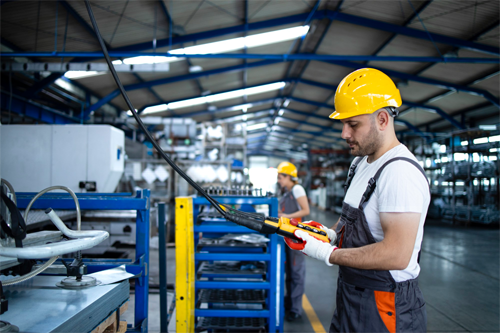Business Fixed Asset Management helps organizations keep an eye on your Fixed Assets like machinery and vehicles. It also evaluates their condition, and maintain operational efficiency. This enables a business to lower inventory losses and machinery breakdowns and increase asset longevity. Fixed assets are not held for resale in the regular business course but are used continuously for the production or provision of goods or services.
In most circumstances, a company’s net worth is mainly comprised of the value of its fixed assets. Up to 40% of investments in some businesses are used to acquire fixed assets like machinery and vehicles. The most significant investments are those that most businesses make in assets like land, buildings, transportation, and industrial equipment. Asset management done right can save businesses money and solve many logistical problems.
Tasks of Business Fixed Asset Management
The following are the critical task of fixed asset management.
- Overseeing and tracking fixed assets
- Establish an accurate baseline of fixed assets.
- Monitoring fixed assets in multiple locations
- Minimizing maintenance costs
- Helping to increase operational activities
- Rely on accurate depreciation calculations.
- Keeping a record of assets
What is Ghost Asset?
Property no longer useable, stolen, or lost but still classified as a fixed asset in the company’s balance sheet or fixed asset management system is referred to as a “ghost asset.” According to a recent study, 10 to 30 percent of fixed assets are no longer owned. 65 percent of the data on assets is inaccurate, incomplete, or missing altogether.

As fixed assets make up a significant portion of company balance sheets and make up the majority of many businesses’ investments, ghost assets comprise 10–30% of the fixed assets listed on the books. As a result, the business may be paying too much in taxes and insurance on those assets. Unidentified ghost assets may result in loss of production because they prevent the timely availability of missing or useless assets. That means when staff needs an asset, a resource on paper isn’t much help.
Importance of Physical Verification
Assets should be physically checked and inventoried regularly using a standardized procedure at each site of the business to enable optimal fixed asset management. It is a process that an organization uses to confirm the existence of fixed assets reported in the fixed asset register and the entity’s books of account.
Physical verification makes it easier to identify every item owned by the business and to determine its location, state of repair, and other details. An audit is not complete without asset verification, a critical component of auditing.
You can conduct physical verification of assets in two ways
- Complete inventory verification or Wall to wall inventory verification
- Cyclical inventory verification
Physical inventories, often known as “full inventory verification” or “wall-to-wall inventory,” can be carried out simultaneously at every location. Another technique is called “cycle inventory verification,” which entails performing repeated partial inventories inside various departments, maybe at various times of the year.
All data related to fixed asset inventories in both methods should be centralized and compared to the information already present in the fixed asset register and books of accounts. Each organization will have a different best practice depending on aspects like employees and resources.
Importance of Fixed Asset Management
- It helps an organization maintain proper books of accounts for Fixed Assets.
- Remove Ghost Assets from Organization inventories
- Helps identify and manage risks
- Increased asset utilization for higher profit
- Reduction of lost and theft
- Improve asset acquisition and use
- Improved reliability of assets
Fortuner Fixed Asset Management assists organizations in centralizing data pertaining to their fixed assets. It makes it possible for an organization to rapidly and effectively find information about fixed assets. Fixed asset management systems from Fortuner will automatically notify the company of Annual Maintenance Contracts, Warranty details, Calibration details, and when to service a machine or tool. When properly implemented, Fortuner Fixed Asset Management offers cost-of-production control and aids in keeping your company within budget.
Fortuner can alert you to the potential for equipment to become outdated or the necessity for routine maintenance on machinery, which can save future expensive repairs for the business. Fortuner help you by alerting organizations when equipment becomes outdated or the necessity for routine maintenance on machinery, which can save future expensive repairs for the business.
For the business to run smoothly, the company must make significant decisions regarding selecting various fixed assets needed to build the appropriate production facilities and assessing the level of fixed assets in the capital structure. Fixed asset decisions typically entail large sums of money over a long period and are irreversible, which impacts the company’s long-term profitability. Therefore, managing fixed assets is crucial for any business organization.

